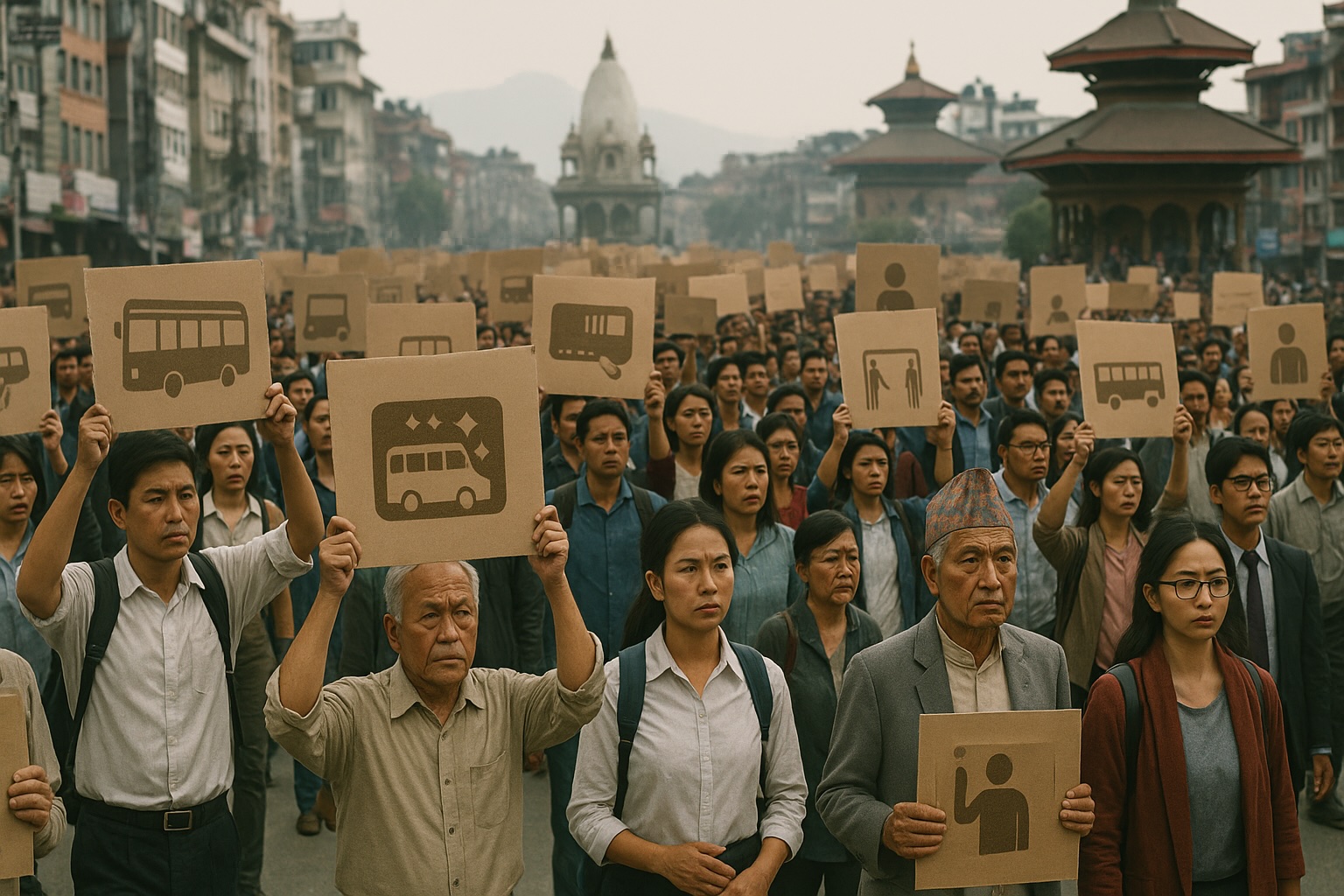Kathmandu’s Largest Protest Yet: A Dream Deferred in the Struggle for Dignified Commuting
— A Consumer’s Unfinished Dream

Kathmandu | As the soft morning light touched the streets of Kathmandu, the city awakened not just to another day, but to an extraordinary uprising. Not a single political banner was in sight, no party flags waving—only placards held high by everyday citizens demanding one simple thing: the right to commute with dignity.
From Maitighar Mandala to the crowded lanes of New Bus Park, thousands had spontaneously gathered in what would become the largest protest Kathmandu had witnessed in recent memory. It wasn’t about ideology or partisan slogans—it was about broken buses, suffocating crowds, and being treated like burdens instead of citizens.
The protest, led by the Nepal Consumer Federation, carried demands rooted in lived experience: cleaner public buses, adherence to traffic laws, an end to inhumane overcrowding, and most notably, the introduction of a modern digital fare card system—akin to Germany’s public transport model. Protesters voiced frustrations over bus operators who routinely disregarded traffic rules, crammed passengers like pickles in a jar, and humiliated students who dared to ask for legal fare discounts.
Placards read:
"Overcrowding is not normal, dignified travel is our right!"
"No more filthy buses—we demand clean commutes!"
"Respect students, don’t mock their concessions!"
Even the police, often viewed with skepticism during street movements, stood respectfully aside. The atmosphere was electric, yet peaceful. Young people strummed guitars, elderly couples clasped hands, and strangers shared water and solidarity. It felt like a festival of citizen power—a moment of quiet revolution.
And then—chaos.
A sudden deafening boom shattered the calm. A bomb? Smoke? Screams filled the air. People fled. Fear rippled through the crowd.
And I awoke.
My heart was pounding. I was in my bed. It was 7:00 a.m. Just a dream. A vivid, surreal dream. With a bitter edge of irony.
Reaching for my phone, I checked the morning headlines:
"Transport Strike Withdrawn After Government Assurance"
My chest sank. The dream—so charged with hope, unity, and clarity—was already receding into the fog of ordinary failure.
By 8:00 a.m., I was on the street, hurrying to catch a bus. Just one Sajha Yatayat vehicle was running, overpacked like a jar of fermented greens. Half of someone’s body was hanging out of the door. I forced myself inside, limbs compressed, shoulders bent. The bus crawled forward, violating traffic norms, and yes, once again, a student was publicly berated for asking for a discount.
I said nothing. But inside, the question kept echoing:
How many more dreams must we dream? How many indignities must we endure?
The same suffocating crowds. The same systemic neglect. The same public transport that shames, delays, and dismisses its users. That dream of an awakened citizenry, a reformed transport system, and a dignified daily commute remained trapped within my subconscious.
Still, I remember that dream. Vividly. I remember the power of a united voice demanding simple rights. Maybe one day, Kathmandu will truly rise—not in sleep, but in solidarity.
Until then, we continue to ride packed like pickles, breathe air laced with dust and disappointment, and hope that someday, what we see in our sleep becomes what we live in our streets.
There are still many dreams left to dream— and many voices yet to rise.




![From Kathmandu to the World: How Excel Students Are Winning Big [Admission Open]](https://nepalaaja.com/index.php/img/70194/medium/excel-college-info-eng-nep-2342.jpg)
